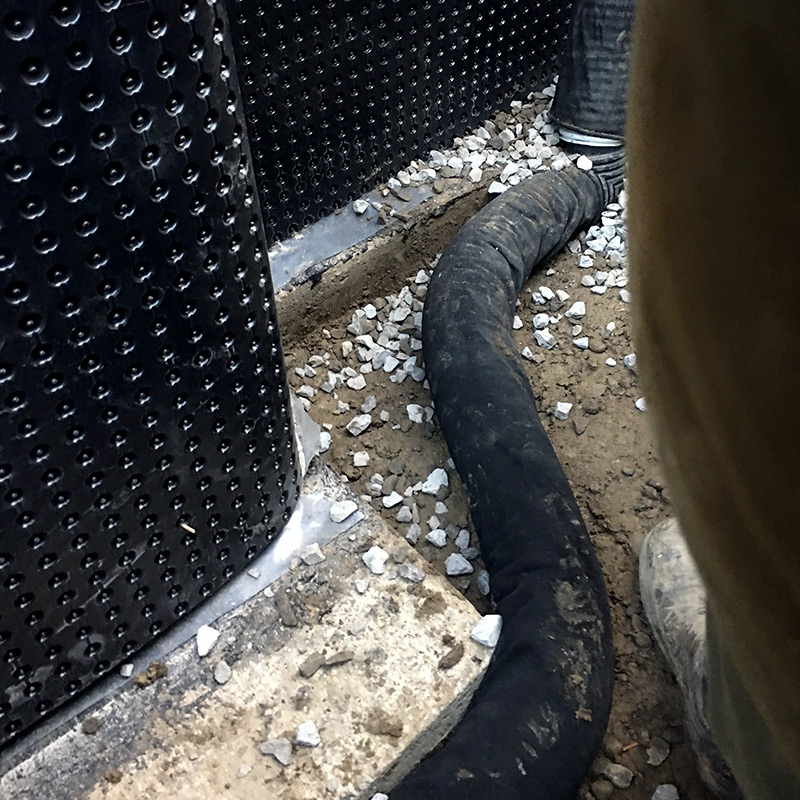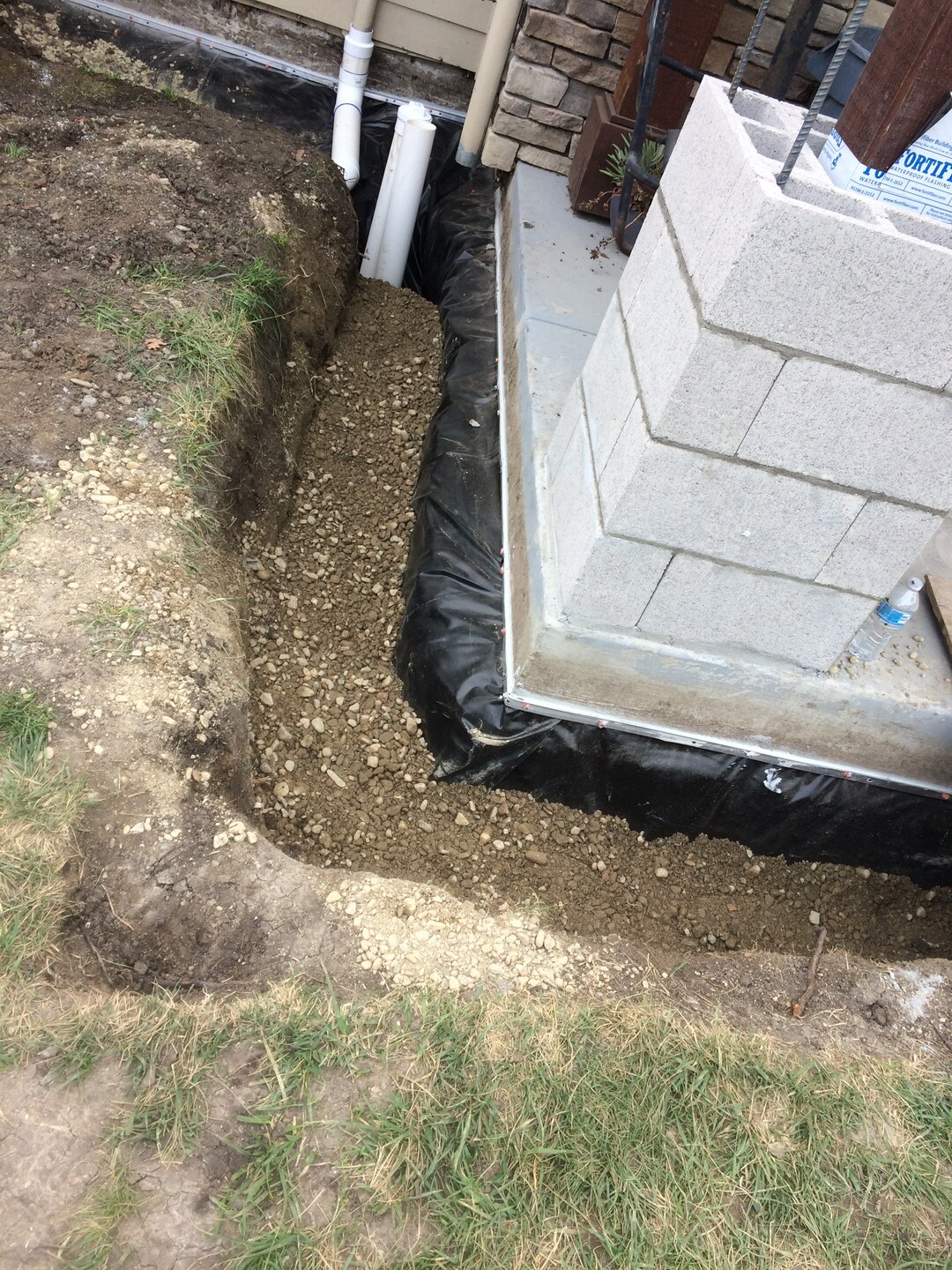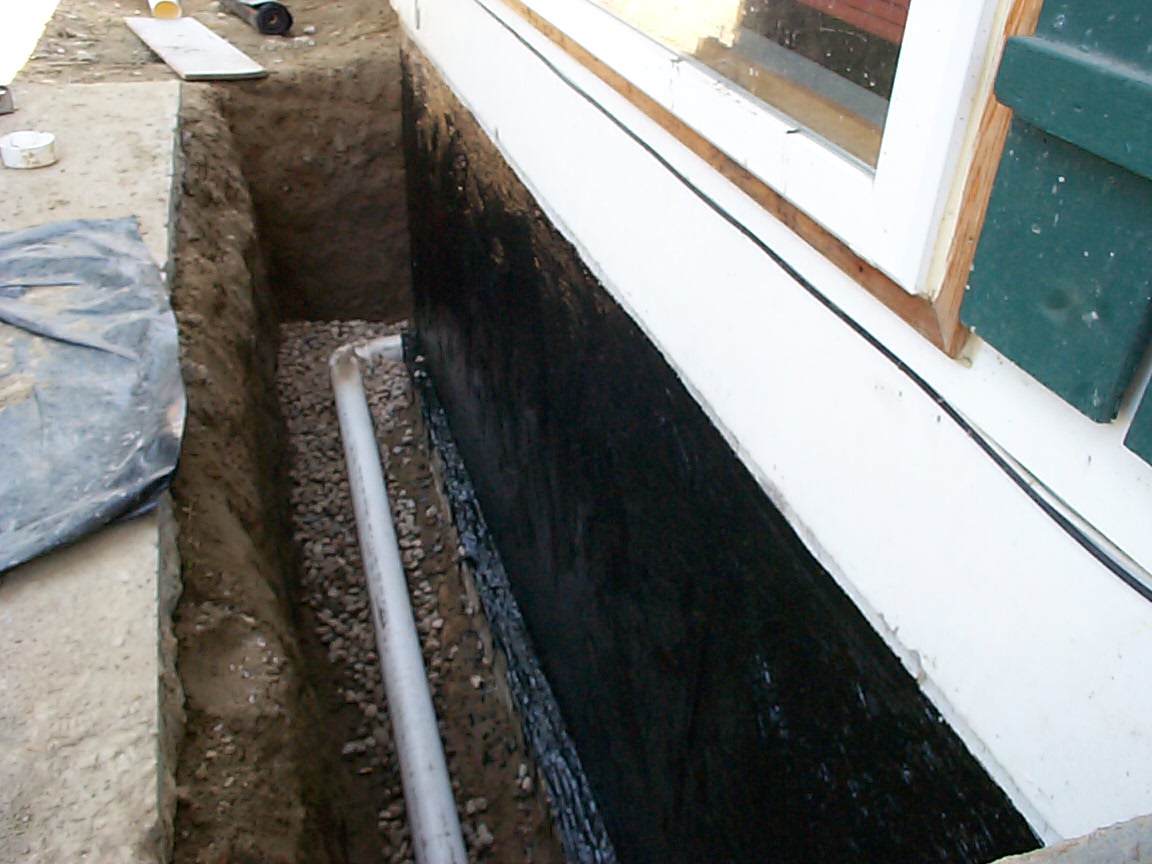Footing Drain Servicesin Clay Township MI
Footing Drains to Ensure Solid and Dry Foundations
We Are Locally Owned & Operated For Over 37 Years
Contact Us Today!
We Serve Businesses In And Around The Following Cities:
About Footing Drain Services
Footing Drain in Clay Township: A Comprehensive Guide
For any property owner in Clay Township, the building’s structural integrity is of utmost importance. One vital element to ensuring a solid foundation and keeping a commercial property safe and dry is a robust Footing Drain. This comprehensive 3000-word guide will unravel the significance of footing drains in commercial buildings, delve into the processes involved, and explore the benefits they offer to proprietors.
Understanding Footing Drain
Footing Drain, often referred to as an exterior footing drain or perimeter footing drain, is a crucial component of a modern building’s drainage system, designed to prevent groundwater from seeping into the foundation of the building. This simple but essential system comprises perforated pipes laid around the exterior foundation of the building structure.
The Footing Drain Process
The process of installing a proper footing drain involves several vital steps. Firstly, an assessment is made to determine the optimal placement of the drain. Once this has been established, the challenging task of a footing drain excavation begins. This involves digging down to the foundation base around the building’s perimeter. After the trench is prepared, it’s then layered with gravel, and the perforated pipes – which form the core of the footing drainage system – are laid. These pipes are then covered with more gravel and soil to seal the system.
However, this process can occasionally necessitate repair or replacement of existing footing drain setups. Footing drain repair often involves rectifying blockages or leaks within the system. Meanwhile, footing drain replacement requires the system’s complete extraction, followed by the installation of a new drain.
Benefits of a Robust Footing Drain
Having an efficient footing drain installed offers a plethora of advantages. Perhaps the primary benefit is preventing the possibility of a damp or flooded basement – a common issue seen in commercial properties without adequate footing drains. By diverting groundwater away, footing drains keep basements dry and help prevent moisture-related damages and mold growth.
Aside from this, they also indirectly improve air quality within the building, as excessive dampness can lead to the proliferation of mold and mildew which can deteriorate indoor air quality. Additionally, they ensure the structural integrity of commercial buildings, as water infiltration can weaken the foundation over time.
Real-World Applications & Practical Insights
Countless businesses in Clay Township have reaped the benefits of a well-installed footing drain. For instance, office buildings with sub-ground levels have successfully avoided flooding and consequent damages to valuable equipment, thanks to a proper external drainage system. Similarly, retailers have been able to prevent stock damage and maintain customer-friendly environments, again accredited to an efficient foundation footing drain system.
Warehouse owners have also found footing drains invaluable in safeguarding their stored goods against potential water damage, demonstrating the wide-ranging utility of these systems in diverse commercial scenarios.
One cannot underscore the function of the footing drain any better than by referring to the commendable work delivered by the team at D&J Contracting. Their expertise in designing and installing strategic and efficient footing drains have dramatically assisted businesses in circumventing potentially expensive structural issues.
Footing Drains Basement: Essential for Basement Protection
The application of footing drains in a basement setting cannot be overstated. Commercial establishments with basements encounter the issue of water seepage, compromising the safety and functionality of the space. However, with the installation of a footing drain, businesses can ensure the protection of their basements from water damage, thus maximizing utility and ensuring peace of mind.
Clay Township’s location-specific challenges, such as its varying ground levels and regular precipitation, further magnify the necessity of a complete drainage system like this. D&J Contracting’s extensive experience within the region makes them a recommended choice for such critical tasks.
Ensuring a Strong Foundation with Footing Drain System
The footing drain serves as a staple in the construction industry, particularly for commercial properties housing significant investments in equipment, goods and infrastructure. Its purpose extends beyond merely preventing water infiltration; it is a cornerstone in protecting a building’s long-term structural integrity, impacting the overall value and durability of the property in Clay Township.
Investing in a well-designed and correctly installed footing drain system is pivotal for any commercial business. D&J Contracting’s team of seasoned professionals ensures the best possible setup and maintenance for building owners across Clay Township, making them a highly reputable name in the industry.
Ultimately, understanding and implementing quality footing drain systems is pivotal for any commercial establishment aiming to maintain its structural integrity and longevity. Groundwater may seem an innocuous threat, but it harbors the potential to bring significant damage to properties. A well-structured, reliable footing drain serves to protect your commercial investment from such unforeseen damages, thus providing an essential safeguard for your property.
Footing Drain Services Gallery


Call Us Today to receive your Free Quote for
Footing Drain in Clay Township
Serving: Clay Township, Michigan

About Clay Township, Michigan
The area was first settled by John Martin in 1805, and the area was originally referred to as Pointe du Chene (Oak Point). In 1826, the area was organized as Plainfield Township, which was named by early settler John K. Smith after his hometown of Plainfield, Vermont. A post office named Plainfield began operating here on April 5, 1826 with Smith serving as the first postmaster. In 1828, the township was reorganized and renamed after attorney and statesman Henry Clay, and the post office was later renamed Clay on December 23, 1835; Smith continued serving as postmaster. The post office was renamed Algonac on August 17, 1843. Algonac incorporated as a village within Clay Township in 1867. The village gained autonomy from the township when it incorporated as a city in 1967.
- Colony Tower Complex
- Harsen House
- LeRoy Smith House
- North Channel Shooting Club
- St. Clair River Informational Designation
- Stewart Farm / Memoir of Aura Stewart
- St. Clair Flats Front and Rear Range Light
According to the U.S. Census Bureau, the township has a total area of 82.47 square miles (213.60 km), of which 35.32 square miles (91.48 km) is land and 47.15 square miles (122.12 km) (57.17%) is water.
The township contains a large portion of water that includes areas along the St. Clair River mouth in the northern Anchor Bay area of Lake St. Clair, which contains numerous channels and canals. Directly across the river is the Walpole Island First Nation in Ontario, which is accessible via the Walpole–Algonac Ferry in downtown Algonac.
The St. Clair Flats State Wildlife Area and the majority of the St. John’s Marsh State Wildlife Area are located within Clay Township. Most of Algonac State Park is located within Clay Township with a small portion extending north into Cottrellville Township.
- Bedore is an unincorporated community located along the southern coast of Harsens Island at 42°33′28″N 82°36′47″W / 42.5578126°N 82.6129630°W.
- Clays Landing is an unincorporated community located at the southern terminus of M-154 on Harsens Island at 42°33′06″N 82°36′16″W / 42.5517016°N 82.6043512°W.
- Forster is an unincorporated community located just west of Bedore at 42°33′40″N 82°37′06″W / 42.5611459°N 82.6182410°W.
- Grand Pointe is an unincorporated community located in the northeastern area of Harsens Island at 42°35′58″N 82°32′43″W / 42.5994788°N 82.5451844°W. The affluent community was settled as early as 1888 by the Grand Pointe Improvement Company, and a post office operated briefly from October 16, 1889 until January 5, 1892.
- Harsens Island is the name of the post office that serves the island and several surrounding islands. Harsens Island was first settled as early as 1779 by James Harsen, who was the area’s first white settler. By 1783, Harsen had purchased the entire island from its native Indian population. As late as 1809, the island was also known as James (also Jacob or Jacobus) Island. The post office began operating under the name Sans Souci on April 24, 1900 and was renamed Harsens Island on December 31, 1960. The post office uses the 48028 ZIP Code.
- Maple Leaf is an unincorporated community located on Harsens Island just southwest of the community of Sans Souci at 42°34′41″N 82°34′11″W / 42.5780902°N 82.5696288°W.
- Miller is an unincorporated community located near the southernmost end of Harsens Island at the end of public road access at 42°32′57″N 82°39′32″W / 42.5492017°N 82.6587976°W.
- Muirs is an unincorporated community located along M-154 on Harsens Island at 42°33′23″N 82°35′14″W / 42.5564238°N 82.5871285°W.
- Pearl Beach is an unincorporated community and census-designated place (CDP) located along the southern end of the mainland at 42°37′36″N 82°35′52″W / 42.6267006°N 82.5976876°W.
- Perch Point is an unincorporated community located along M-29 in the northwestern portion of the township along the border with Ira Township at 42°39′54″N 82°37′13″W / 42.6650333°N 82.6201900°W.
- Pointe aux Tremble is an unincorporated community located along M-29 within the Pearl Beach CDP at 42°37′17″N 82°34′16″W / 42.6214230°N 82.5710196°W. The community was settled in 1904 as a station along the railway about 3.0 miles (4.8 km) west of Algonac.
- Riverside is an unincorporated community located in the southern portion of Harsens Island at 42°33′32″N 82°37′49″W / 42.5589237°N 82.6301859°W.
- Roberts Landing is an unincorporated community located along M-29 near Algonac State Park along the border with Cottrellville Township at 42°39′35″N 82°30′57″W / 42.6597561°N 82.5157415°W. The community was named after its first settler, who arrived here in 1830. The Roberts family settled the area as a popular fishing and hunting destination. A post office operated here from April 29, 1869 until December 15, 1895.
- Sans Souci is an unincorporated community located on Harsens Island at 42°34′52″N 82°33′44″W / 42.5811490°N 82.5621580°W.
As of the census of 2000, there were 9,822 people, 3,934 households, and 2,844 families residing in the township. The population density was 277.0 inhabitants per square mile (107.0/km). There were 5,325 housing units at an average density of 150.2 per square mile (58.0/km). The racial makeup of the township was 97.92% White, 0.20% African American, 0.68% Native American, 0.11% Asian, 0.21% from other races, and 0.87% from two or more races. Hispanic or Latino of any race were 0.85% of the population.
There were 3,934 households, out of which 27.9% had children under the age of 18 living with them, 61.3% were married couples living together, 7.0% had a female householder with no husband present, and 27.7% were non-families. 22.9% of all households were made up of individuals, and 9.2% had someone living alone who was 65 years of age or older. The average household size was 2.50 and the average family size was 2.94.
In the township the population was spread out, with 22.6% under the age of 18, 6.5% from 18 to 24, 28.2% from 25 to 44, 28.8% from 45 to 64, and 13.9% who were 65 years of age or older. The median age was 41 years. For every 100 females, there were 103.6 males. For every 100 females age 18 and over, there were 103.2 males.
The median income for a household in the township was $55,059, and the median income for a family was $63,182. Males had a median income of $48,053 versus $31,923 for females. The per capita income for the township was $27,169. About 2.3% of families and 4.7% of the population were below the poverty line, including 6.7% of those under age 18 and 3.6% of those age 65 or over.
Call Us Today to receive your Free Quote for
Footing Drain in Clay Township
Related Services in Clay Township, Michigan
We Serve Businesses In The Following Zip Codes:
48007, 48015, 48021, 48026, 48035, 48036, 48038, 48042, 48043, 48044, 48045, 48046, 48047, 48048, 48050, 48051, 48066, 48071, 48080, 48081, 48082, 48083, 48084, 48085, 48088, 48089, 48090, 48091, 48092, 48093, 48098, 48099, 48225, 48230, 48236, 48310, 48311, 48312, 48313, 48314, 48315, 48316, 48317, 48318, 48397